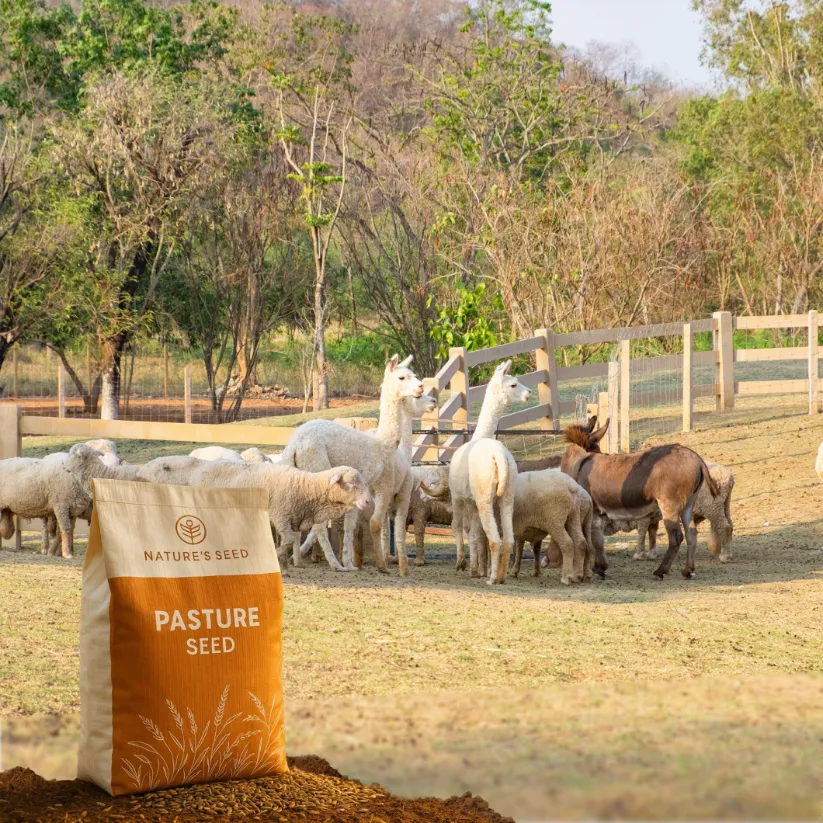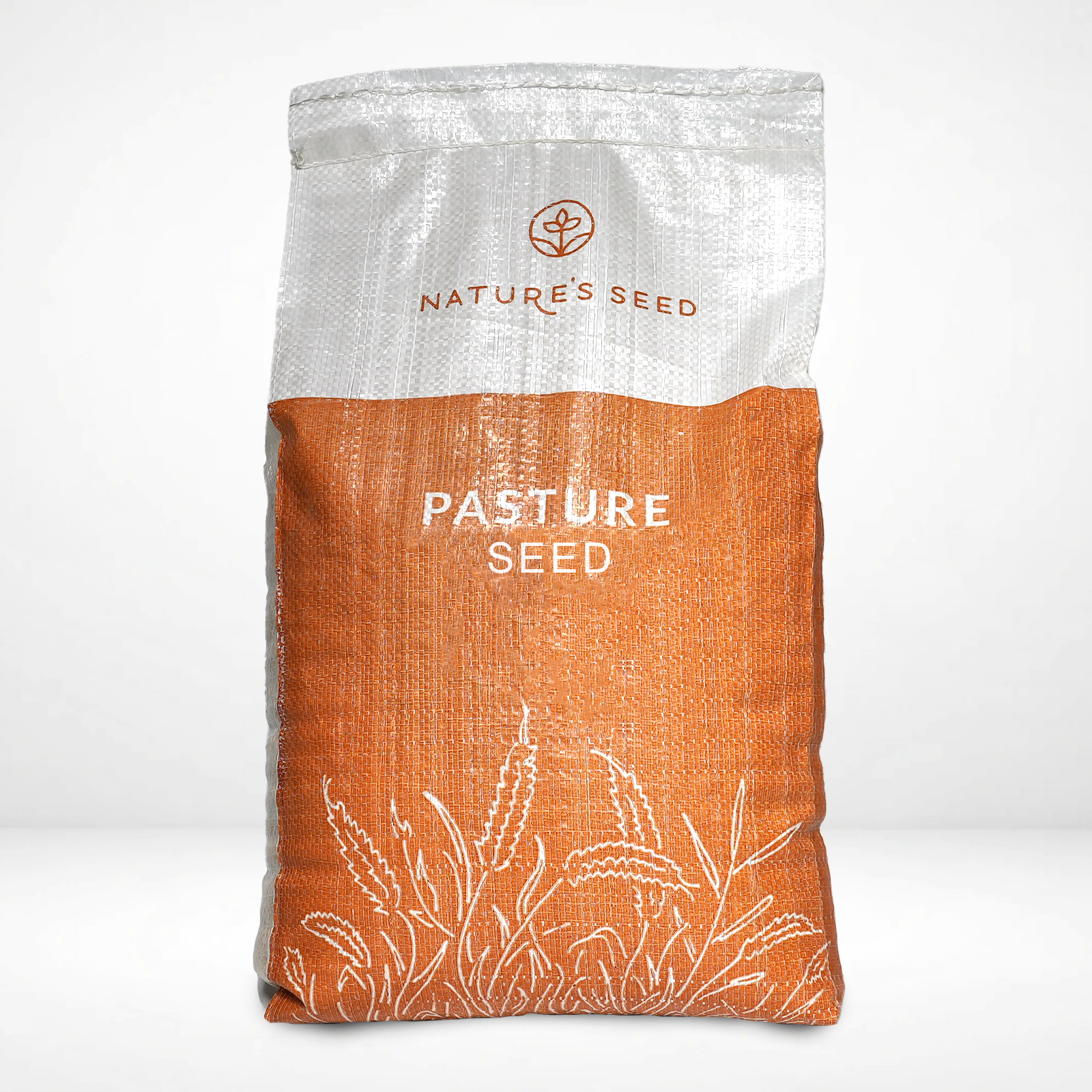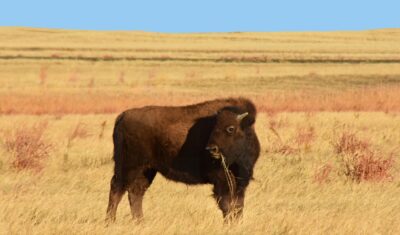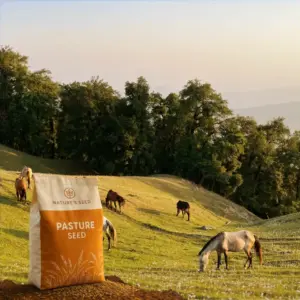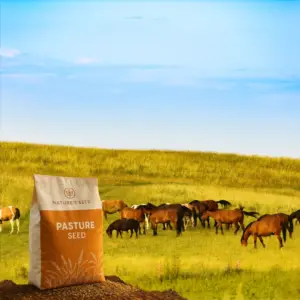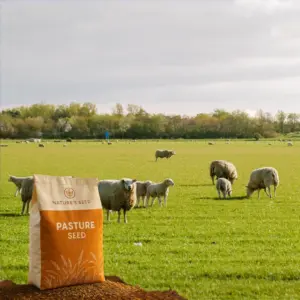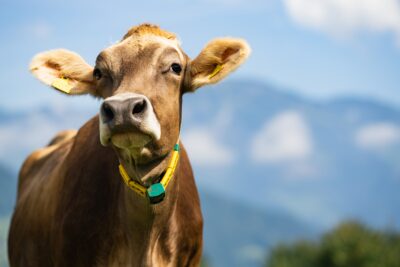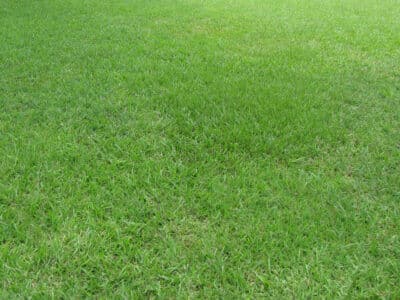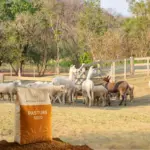
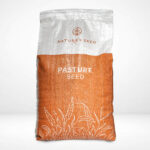
What is the Alpaca & Llama Forage Mix?
Alpaca & Llama Forage Mix is a resilient, nutrient-rich pasture seed blend (Timothy, Meadow Brome, Kentucky Bluegrass, Orchardgrass) ideal for grazing alpacas, llamas, cattle, sheep, and goats. This low-maintenance, drought-tolerant mix thrives across U.S. regions, supporting hardy pastures with excellent forage, erosion control, and wildlife habitat adaptability.
Specifications
Sun Requirement
Full sun
Soil Preference
Fertile, well-drained soils
Soil pH
~6.0 to 7.5 is ideal;
Time to Maturity
2-3 Months
Height when mature
~2–4 ft
Seeding Rate
20 lbs/Acre
Planting Depth
1/4″ deep maximum
- You cannot add "Big Four Native Erosion Control Mix" to the cart because the product is out of stock.
Alpaca & Llama Pasture & Forage Mix
SKU: PB-ALPACA
- Alpaca/Llama
Will the seed work for your area?
Check your region
select quantity
Description
What seeds are in the mix?

Outstanding Drought Performance
This mix is built for drought resilience. Deep-rooted grasses like meadow brome and orchardgrass stay green longer in dry spells, withstanding as little as 13–16″ of annual moisture. While timothy may go dormant in heat, the other species maintain growth, keeping your pasture productive through summer stress and bouncing back quickly after rain.

Low Maintenance Needs
As a perennial blend, the Alpaca & Llama Forage Mix creates a long-lasting, low-maintenance pasture. Winter-hardy and weed-resistant, it forms a dense sod that returns year after year. Orchardgrass and meadow brome are productive with proper rest, while Kentucky bluegrass spreads to fill gaps. It thrives with minimal inputs—just rotate grazing and let it grow.
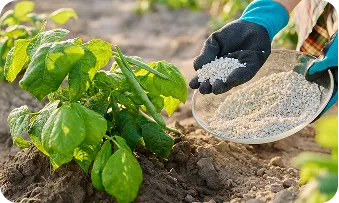
Soil Stabilization & Erosion Control
With deep roots and dense sod, this mix naturally prevents erosion. Meadow brome and orchardgrass anchor soil with strong root systems, while Kentucky bluegrass forms a tight surface mat that resists runoff. Ideal for slopes or exposed areas, it protects against wind and rain while improving soil structure over time, keeping your land green and your topsoil in place.
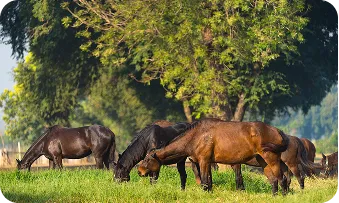
Excellent Grazing Resilience
The mix is built for grazing pressure. Kentucky bluegrass tolerates close, frequent grazing and prevents bare spots with its dense sod. Orchardgrass and meadow brome thrive under rotational grazing, offering strong regrowth and high yields. This blend balances durability and productivity, creating a pasture that handles both light nibbling and heavy use while staying lush and resilient.
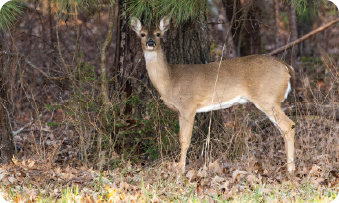
Wildlife & Pollinator Habitat Value
This forage mix supports more than just livestock—it enhances local wildlife habitat, too. Deer, elk, and geese graze these grasses, while rabbits, turkeys, and songbirds find shelter in the dense cover. Though wind-pollinated, the grasses help retain moisture and create refuge for pollinators. Interseeding with wildflowers or clover boosts pollinator value, making this mix a great foundation for a thriving, multi-use habitat.
Description
What seeds are in the mix?
Detail Product
Sun/Shade
Full sun for best production
Height
~2–4 feet
Seeding Rate
~20–25 lbs/acre (drilled) for pastures; 25–30+ lbs/acre if broadcast. For smaller areas: ~0.5–0.7 lb per 1,000 sq ft.
Uses
Pasture grazing (alpacas, llamas, cattle, sheep, goats, horses), hay and silage production, erosion control, land reclamation, wildlife habitat, cover cropping, meadow landscaping.
Color
Rich green foliage through spring and early summer; seed heads mature to a golden-tan. Stays green into fall, and regreens early each spring.
Water
Rich green foliage through spring and early summer; seed heads mature to a golden-tan. Stays green into fall, and regreens early each spring.
Native
Introduced – originally from Eurasia (Europe/West Asia). All four species are naturalized across the U.S. in cool climates.
Life Form
Perennial cool-season grasses. (Timothy, Meadow Brome, Orchardgrass are bunchgrasses; Kentucky Bluegrass is a sod-forming grass.) The mix is a herbaceous grass blend (no shrubs or legumes).
Product Uses
Lock in your soil, even on steep slopes
This mix doubles as a powerful erosion control solution, thanks to deep-rooted grasses like meadow brome and orchardgrass, plus sod-forming Kentucky bluegrass. Together, they create a dense root system that holds soil in place, reduces runoff, and strengthens the structure over time. Ideal for slopes, swales, and disturbed ground, it’s a go-to choice for conservation plantings. For extra protection on steep terrain, pair with mulch or an erosion blanket—then let nature do the rest.
Built for grazing, balanced for performance
This mix creates a lush, nutrient-rich pasture that’s perfect for alpacas, llamas, and mixed herds of cattle, sheep, goats, and horses. Palatable grasses like orchardgrass and meadow brome fuel weight gain and milk production, while tough Kentucky bluegrass handles close grazing and heavy foot traffic. Whether you’re raising a fiber herd or managing a rotational grazing system, this blend delivers the nutrition your animals need—and the durability your pasture demands.
A beautiful meadow, no hassle required
This mix creates a lush, natural-looking landscape that thrives with little water or mowing. Perfect for homesites, farmsteads, or solar fields, it grows 2–4 feet tall, stays green on rainfall alone, and even does well in partial shade. Winter-hardy and drought-tolerant, it delivers a tidy, self-sustaining meadow from spring through fall—just seed it once and enjoy the view.
Wildlife love it year-round
This mix is a favorite for food plots and conservation plantings, drawing in deer, elk, upland birds, and small game. Grasses like orchardgrass and timothy provide food, nesting cover, and attract insects that wildlife rely on. Leave it uncut, and it doubles as a winter shelter—perfect for year-round habitat. Whether you’re restoring land or planting along field edges, it’s a smart, low-maintenance way to support a thriving wildlife population.
Questions & Answers
What is the Alpaca & Llama Forage Mix, and why should I use it?
Yes, this mix is perfect if you’re raising alpacas, llamas, or other grazing animals and want a reliable, nutritious pasture.
It’s made up of four cool-season grasses—Timothy, Meadow Brome, Kentucky Bluegrass, and Orchardgrass—each chosen for a specific reason. Timothy and orchardgrass are highly palatable and produce lots of forage. Meadow brome regrows quickly and holds up well in dry spells. Kentucky bluegrass forms a thick, dense turf that stands up to trampling and close grazing.
What makes this mix especially great for alpacas and llamas is that it creates a leafy, tender pasture they’ll actually want to eat, without wearing it out. Since these animals often graze on small plots, you need something tough but tasty. This mix delivers both. It’s also great for hay production if you want to stock up for winter feeding.
If you’re looking to create a long-lasting pasture that doesn’t need constant replanting or pampering—and one that supports fiber production, healthy growth, and overall herd health—this mix is a smart, low-fuss choice. Even local wildlife may stop by for a nibble!
Is this mix good forage? Which livestock can graze it?
Yes, this mix is a great fit for nearly all grazing livestock—whether you’re raising alpacas, cattle, sheep, goats, or horses.
It’s made from classic pasture grasses like Timothy, Orchardgrass, Meadow Brome, and Kentucky Bluegrass—species trusted by farmers for their high feed value and palatability. Horses especially love Timothy, which is low-dust and easy on their digestive systems. Cattle, sheep, and goats thrive on orchardgrass and meadow brome, which are high in protein and very digestible when grazed young. These grasses also regrow well, giving you steady forage through the season.
Alpacas and llamas, who graze closer to the ground, benefit from the Kentucky bluegrass—it forms a dense, living carpet that stays green and accessible even after repeated grazing. It’s also one of the most digestible cool-season grasses and is sometimes nicknamed “sweet grass” for how much animals love it.
Overall, the mix strikes a nice balance: it’s fibrous enough for healthy digestion in ruminants, but soft and leafy enough to keep animals coming back for more. If you want to maximize nutrition for high-producing animals, you can always add a mineral supplement or mix in a legume like clover—but on its own, this mix gives you a solid, reliable base for a productive pasture.
How do I plant and establish this pasture mix?
Yes, planting the Alpaca & Llama Forage Mix is simple, especially if you follow a few key steps to help it get established.
Start by prepping your seedbed. Clear away weeds or old grass and loosen the top few inches of soil with tilling, aeration, or a harrow. The goal is a firm, smooth surface that’s mostly free of weeds. Lightly dragging or rolling the soil before and after seeding helps with even coverage and seed-to-soil contact.
Timing matters. Aim to plant in early spring (like April or May) or late summer to early fall (August to September), when cool temperatures and consistent moisture give the seeds their best start.
You can use a seed drill (ideal for precision) or broadcast the seed by hand or spreader. If broadcasting, slightly increase the seeding rate and roll or drag the area after pressing the seeds in—these are small seeds and only need to be about ¼ inch deep. Don’t bury them too far or they won’t sprout.
Watering: If rain isn’t in the forecast, water the area gently to keep the topsoil moist for the first 2–3 weeks. Germination happens quickly for some species (Timothy and Orchardgrass in about a week), but Kentucky Bluegrass takes a bit longer, often two weeks or more.
Weed control is key. Mow down any fast-growing weeds that shade out your seedlings. Let the pasture fill in fully—don’t graze it that first season. If you plant in fall, wait until the following spring to introduce light grazing, and only once the plants are well rooted.
A soil test can guide your fertilizer needs, but if you didn’t mix in any legumes, applying 30–50 lbs of nitrogen per acre can give the grasses a good head start.
Bottom line: Give the seeds moisture, shallow placement, and time. Be patient the first year, and you’ll be rewarded with a dense, productive pasture that stands up to years of grazing.
Does this mix need a lot of water? How drought-tolerant is it?
Yes, this mix handles dry spells well, but it’s not a desert grass.
Once it’s established, the Alpaca & Llama Forage Mix is more drought-tolerant than most lawns or shallow-rooted grasses. It thrives in areas that get around 16–20 inches of rainfall per year, which covers much of the U.S. In those regions, it usually won’t need irrigation unless there’s a long dry stretch.
During hot, dry weather, some grasses in the mix—like orchardgrass and meadow brome—may slow down or go semi-dormant, but they’ll bounce back quickly when rain returns. Others, like Timothy, don’t handle extended drought or heat as well and may go dormant or thin out, but they’re included for their feed quality during the cooler, wetter parts of the season.
In short, the mix won’t die off at the first sign of drought. It browns off gracefully, then regrows when the weather shifts. If you’re in a dry or drought-prone area, this mix can still work—just know that it will perform best with at least occasional moisture. For extremely dry climates (less than 12 inches of annual rainfall), you’ll either want to irrigate or look at more xeric forage alternatives.
Tip: During drought stress, give the pasture a break from grazing. Leaving a bit of green leaf helps the plants recover faster when the rain comes back.
How should I manage grazing on this pasture to keep it healthy?
Yes, with the right grazing approach, your pasture can stay healthy and productive for years.
Here’s what matters most:
Don’t graze too early, don’t graze too short, and give the pasture time to rest.
Wait until it’s ready: After planting, give the grasses time to establish deep roots. If you’re relying on natural rainfall (dryland conditions), it’s usually best to wait until late summer or fall of the second year before introducing grazing. If you have irrigation and strong growth, light grazing may be possible in late summer of the first year, but many producers still wait.
Follow the 8–3 rule: Start grazing when the grass is about 8–10 inches tall, and pull animals off when it’s grazed down to 3–4 inches. That leftover leaf is crucial—it helps the plant recover faster by capturing sunlight and protecting the growing points near the base. If you let animals graze it below 3 inches (especially repeatedly), species like timothy and orchardgrass can get permanently damaged.
Rotate grazing areas: Rotational grazing is your best friend. Divide your pasture into smaller sections (paddocks), and move animals between them. This gives each area a 3–4 week rest period (or longer, depending on regrowth). Grasses like orchardgrass and meadow brome thrive with this cycle and will produce multiple flushes of growth throughout the season.
Avoid continuous grazing: Leaving animals on the same section all season wears it down. While Kentucky bluegrass can handle closer, continuous grazing, the rest of the mix will decline if never allowed to rest.
Watch late fall grazing: Going into winter, don’t graze too close. Leaving a few inches of stubble helps the grasses store energy in their roots for spring growth. Grazing too tightly in fall can lead to winterkill, especially in orchardgrass.
Species-specific tips: Alpacas and llamas are gentle on the soil with their soft feet, but they graze very low, so you’ll need to monitor closely and move them before they scalp the pasture. In mixed herds, avoid overcrowding and excessive trampling.
Maintenance: Mow or clip uneven or untouched patches to keep growth even and discourage weeds. Also, replace nutrients with fertilizer based on a soil test, especially if the pasture is heavily grazed.
With these simple practices, you’ll build a long-lasting, resilient pasture. Many farmers keep stands like this productive for 10+ years, with just good rotation, rest, and occasional upkeep.
Can I use this mix as a lawn or for an ornamental meadow?
Yes, you can use this mix as a lawn—but expect a taller, more natural look unless you mow it regularly.
This blend was designed for forage, not fine turf, so it behaves differently than typical lawn grass. If left unmowed, it’ll grow into a lush, meadow-like stand. Orchardgrass, meadow brome, and timothy all grow in clumps and can reach over a foot tall, especially timothy, which sends up seed heads. That said, if you mow it down to 3–4 inches every couple of weeks, the Kentucky bluegrass in the mix will thrive. Bluegrass handles close mowing well and will eventually form a soft, dense carpet on its own.
Over time, however, frequent mowing will cause the taller bunchgrasses to fade out, leaving mostly bluegrass behind. So if you’re going for a tidy, short-cut lawn, the mix will gradually behave more like a regular bluegrass lawn. That’s fine if you’re okay with a simpler groundcover, but you’ll lose the original diversity that makes it a great pasture.
If your goal is an easy-care lawn alternative for a larger yard or acreage, this mix is a great choice. You can mow just a few times a year (spring, midsummer, fall) to keep it looking neat. It creates a soft, flowing meadow with minimal effort—great for pollinators, soil health, and low-maintenance beauty.
Quick summary:
-
Want a low-cut, traditional lawn? This mix works, but over time will behave more like a Kentucky bluegrass lawn.
-
Prefer a meadow or a rough-cut lawn? Mow 1–3 times a year and let the diversity shine.
-
Need a play area or smooth turf? Pure turfgrass might be a better fit.
It’s a versatile mix—just tailor your mowing style to match the look and function you want.
Still have
questions?
Our planting experts
are here to help.
Call Us
1-800-123-4567
8 AM–5 PM
Monday–Friday
Reviews
Alpaca & Llama Forage Mix is a resilient, nutrient-rich pasture seed blend (Timothy, Meadow Brome, Kentucky Bluegrass, Orchardgrass) ideal for grazing alpacas, llamas, cattle, sheep, and goats. This low-maintenance, drought-tolerant mix thrives across U.S. regions, supporting hardy pastures with excellent forage, erosion control, and wildlife habitat adaptability.
| Weight | 10 lbs |
|---|---|
| Coverage Area |
